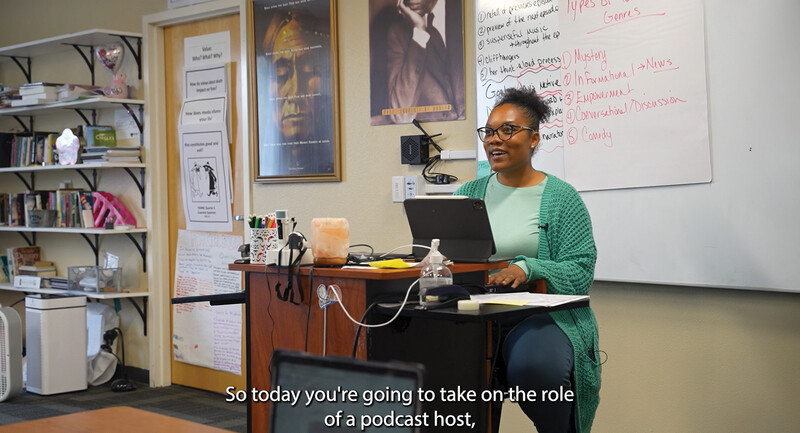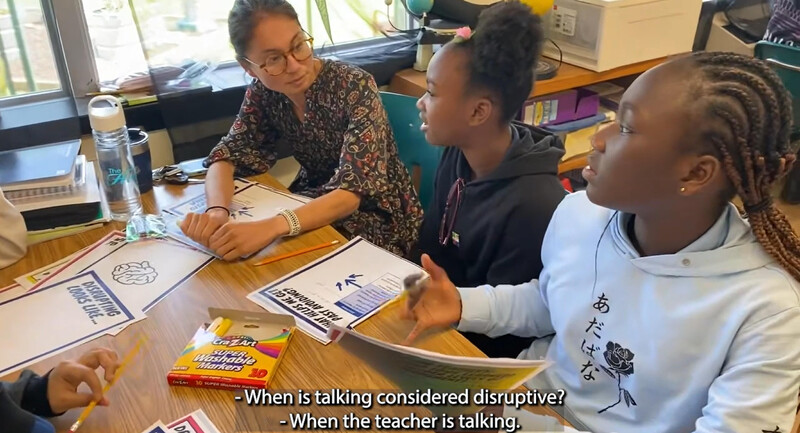By Jeffrey Benson
I wrote Hanging In: Strategies for Teaching the Students Who Challenge Us Most (ASCD, 2014), because far too many students with disabilities were failing in schools. I told stories about compassionate teachers, and teams of teachers, who hung in through the ups and downs of their students’ erratic and idiosyncratic development. Many teachers tell me that the stories from Hanging In affirmed their own efforts to hang in, especially with students on IEPs. Those teachers have been the holders of hope, and the conveyors of strategies.
Those teachers are embodying our truly revolutionary special education laws that insist that every child, regardless of abilities or disabilities, gets an appropriate and free public education. This is a bold declaration in a society with such inequities.
The imperative to hang in with our countless at-risk youth and post-risk youth is regulatory and ethical; nations should be measured by the care we give to our most in need, not by the number of privileged millionaires who manage to remain millionaires. But when is it unproductive to hang in? There is no agreed upon criteria for deciding when a given school cannot best serve a child in need.
I heard from a teacher who suggested to her school leadership that a very troubled child in her class might need more services—and, in fact, might need another placement. To her amazement, she discovered in her mailbox the next day a copy of my book Hanging In, with a note to read it and figure out what to do. I assume the school principal had neglected to see that in every chapter were suggestions for changes the school leaders needed to enact in order to support everyone hanging in.
Hanging in legally has no cost ceiling. The regulations do not allow in any way for schools to restrict placements because of the cost involved. Again, this is revolutionary, but, unfortunately, very problematic. Public school administrators are primary keepers of the budget; they come into almost every IEP meeting with the reasonable hope that their schools can provide the services to meet the child’s needs. They stretch for local solutions, they extol the virtues of inclusion, they float ideas, they reference Hanging In—and their power in the room is significant. A rare teacher will publically challenge the line of reasoning of their boss. I have heard a parent push back on a school administrator who was opposing a costly outside-of-district placement; the parent said, “If that other school was free, we’d be done with the conversation already, right?” But it wasn’t free, and the administrator was doing his job—and still the regulations state that money cannot be discussed as criteria for placement.
When deciding if a school should stop hanging in with a student, there is no use repeating the cliché that, “We are all here for the child,” in the hopes everyone will magically become aligned—because there has been no criteria yet along which to align. The regulations require us to re-consider IEPs when children are not making progress on their goals; there is nothing to reference when the current setting is the issue. For all the students who have been harmed by their exclusion outside the mainstream, there are those who are harmed day by day being in schools that don’t meet their needs. No one may be to blame; it’s just stating the obvious.
We must remember that public schools have never been funded, structured or resourced to educate every child; the graduation rates of those with special needs have never approached the overall graduation rate. Special education regulations did not come about because we were already doing great with all children. “We are all here for the child” means nothing without a shared understanding of when the mainstream is not the least restrictive environment for a child who struggles. And the mainstream is truly not the least restrictive environment for thousands of students.
I offer here criteria to begin our hard conversations—the criteria of when not to hang in:
- The school has documented efforts of doing the following:
- Modifying and accommodating the standard academic curriculum
- Personalizing incentives and rewards
- Maintaining consistency in its own follow through
- Adjusting groupings
- Adjusting schedules
- Modifying transitions
- Instituting individualized de-escalation plans
- Over a period of months, there is little to no measurable success in academics, executive functioning or social-emotional learning, and perhaps only a few hopeful anecdotes.
- The setting presents consistently intractable problems for meeting the students’ needs:
- A bad fit with the other students, including bullying
- No cohort of like peers
- Daily physical challenges in the building
- Transportation each day takes too long
- There is not enough adequately trained staff
- There is not enough specialized equipment
- There has been a significant lack of trust between the school and the family, resulting in unproductive meetings that produce no agreed upon plans, a drop in the student’s attendance and performance, and poor follow-through—the student is unnecessarily suffering because the adult team has become unworkable.
- Safety is a significant concern, and a plan has already failed, and there is no other viable plan to enact.
The “mainstream” should not be idealized. It is too often crowded, competitive, hurried, and under-resourced. For thousands of students who have suffered neglect, abuse, trauma, and exploitation, we need smaller and more personalized settings. Each student who cannot be appropriately educated in the mainstream teaches us about the strengths and weaknesses of that school.
If your team decides it is right to find another placement for a student, use that as an opportunity to learn—the work with the student heading to another placement is not done yet:
- Develop a solid transition plan: Use student and parent input to develop personalized schedule to maximize success for the interim and create opportunities to say good-bye.
- Convene a program debriefing: Ask the following questions – What did we do well? What opportunities did we miss? What did we learn? Do those lessons inform or direct the program’s operations?
It is said that schools sit at the intersection of infinite needs and finite resources—surely a situation that makes a challenging student even more at risk. Hanging in requires us to use whatever means are available for each struggling child; not hanging in, at times, is the very same thing.
Jeffrey Benson has more than 40 years of experience as a teacher, mentor, and school administrator, with a focus on supporting schools that can work for all students. His books include Improve Every Lesson Plan with SEL, Hanging In: Strategies for Working with the Students Who Challenge Us Most, and 10 Steps for Managing Change in Schools: How do we take initiatives from goals to actions? His website is JeffreyBenson.org.








